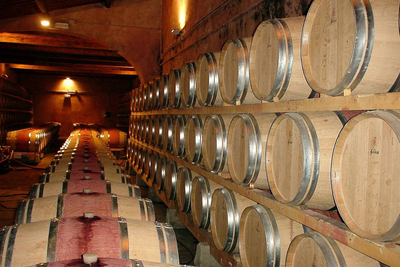What is store inventory control?
Inventory control is the process of keeping track of inventory levels and ensuring that stock is available when needed. It includes activities such as ordering, receiving, and storing inventory.
What's the Difference Between Store Inventory Control and Inventory Management
Introduction

Picture this- You run the most popular bar in the neighborhood. One evening, you tell one of your regulars about a new limited edition wine. They promise to try it out the next time they visit. Unfortunately when they do, you just cannot find the bottle.
The last question you want to hear from a guest is, "Where's that drink you promised?"
"Not found in the system", "not in the warehouse", "the last bottle just sold out" are not the answers you want to give them.
Lost or misplaced inventory is a common problem in most stores, especially small businesses with cramped storage units. Missing items can result from stock-outs, or may be lost among other inventory. If you don't know where your inventory is, how will you sell it? And if you can't sell it, your business will suffer, and you could lose money, customers, or both. A dissatisfied customer may think twice before returning to your bar.
What's more, if you find a product days, weeks, or months after you needed it, you might end up with inventory that has lost value or is no longer relevant in a market where customer demand and preferences change quicker than one can anticipate.
It is, however, easy to prevent a situation like this if you have the right inventory management system in place. Let's see how inventory can be managed better.
What is Inventory Control?
A sub-segment of inventory management, inventory control or stock control, is the process of making certain that an adequate amount of stock is maintained by a business to be able to meet customer demand without delay, while managing the costs associated with holding stock to a minimum.
Inventory control involves understanding what inventory you have on hand, where it is located, and how much of it you need to maintain day-to-day operations. It also means having systems and processes to track inventory movements so that you can make informed decisions about production levels, order fulfillment, and stock replenishment. It is a strategic process involving all activities related to inventory management, from procurement and ordering to warehouse storage and distribution.
One can use an inventory control system to track physical and virtual items and manage inventory for short-term and long-term planning. Many different software programs and systems are available to help with inventory control. These systems help businesses maintain accurate records by providing a way to track stock levels, identify what needs to be ordered, set reorder points, and create reports.
The key elements of the inventory control system includes-
- Stock Levels- Monitor inventory levels to ensure that they are accurate.
- Order Management- Order new inventory as needed to replenish stock levels.
- Receiving- Receive new shipments of inventory and update stock levels accordingly.
- Putaway- Store new shipments of inventory in their proper location and update stock levels accordingly.
- Picking- Retrieve items from storage as needed and update stock levels accordingly.

Control alcohol inventory costs with an easy to use bar management software.
Try a free download now.
Common Inventory Control Methods
Business owners can choose different inventory control methods depending on the requirements of their business. For example, if you are considering an inventory control method for bars, you might be interested in "stock rotation". This method ensures all of the bar's products are used promptly and no product sits on the shelves too long. In addition, by rotating stock, bars can keep their inventories fresh and avoid losing money on expired products.
Here are popular inventory methods a business can opt for-
- First In, First Out (FIFO)- The FIFO method involves stocking the front of shelves with items that will expire first and placing items with longer expiration dates at the back. It means that when you bring new bottles or kegs of beer into the bar, you put them at the back of the storage area, and when you restock the taps, you use the beers that have been there longest. This system ensures that your oldest product gets used before it expires.
- Last In, First Out (LIFO)- This is the opposite of FIFO, where the bar uses the newest products first to avoid the expiration of products.
- First Expiring, First Out (FEFO)- This is a stock control system where the first batch of products to expire is also the first batch of products to be sold. This system is often used in the food and beverage industry, where product expiration dates are strictly monitored. By using FEFO, businesses can avoid selling expired products to customers and incurring losses.
- Two-Bin System- It is an inventory control system where items are stocked in two locations -- a "working stock" location and a "reserve" location. The working stock is the inventory used regularly, while the reserve is kept as a backup for emergencies. A bar can segregate its alcohol into two sections- "Zone One" for products that need to be used immediately and "Zone Two" for products with a longer shelf-life.
- Par Stock System- The Par Stock System is a simple inventory control system that uses preset quantities, or levels of stock to determine when to restock items. It is often used in conjunction with the ABC analysis, which categorizes items according to their importance. The par stock level for an item is the minimum amount of that particular item that should be on hand at any given time. This level is usually determined by considering factors such as the frequency of demand and the lead time for replenishing the item. It is time to reorder when inventories fall below the par stock level.
What is Inventory Management?
Inventory management is the continuous process of keeping track of a business's stocks, including raw materials and finished products. It also includes identifying and tracking inventory levels, setting minimum stock levels, replenishing inventory as needed, and forecasting future demand. Effective inventory management helps minimize waste, reduce costs, and improve profitability.
One of the initial steps in the inventory management process is forecasting demand. This is done by analyzing past sales data to identify trends and using that information to predict future needs. The next step is determining the right inventory to keep on hand, considering factors such as lead time, production time, and retail stores' minimum order quantities. Then make sure that the inventory is always well-stocked. This usually entails setting up a reorder point so that new products are automatically ordered from suppliers when levels start to dip below a cutoff point.
An ideal inventory management process is accurate, precise, and timely. It provides inventory managers with a clear understanding of the objectives and purposes of the inventory system to develop and maintain efficient workflows while keeping track of stock levels, sales data, supplier information, and customer demands.
Implementing an effective inventory management system can help businesses save money by reducing unnecessary purchase costs and storage expenses while ensuring that customers always have the products they need.
Key Elements of Inventory Management
Following a few key principles of inventory management can help streamline your operations and ensure you always have adequate stock. Some of these include-
- Always know what you have in stock- This seems like a no-brainer, but it's important to have a system to track inventory levels so that an unexpected shortage of a product never catches you off-guard. Technology, like barcodes, ERP (Enterprise Resource Planning) software, RFID tags, etc., play an important role in maintaining sufficient inventory without human error.
- Forecast future needs- Planning is crucial in managing your inventory levels. Demand planning and forecasting ensure that the correct inventory level is maintained to meet customer demands. By forecasting future demand for your products, you can avoid having too much or too little stock.
- Calculate inventory turnover- Inventory turnover is a measure of how many times the inventory of a business has been replaced or sold over a period. It is calculated by dividing the cost of goods sold by the average inventory for the period. A company with a high inventory turnover ratio is generally considered efficient in managing its inventory. It ensures stocks are rotated efficiently to minimize waste and maximize profits.
- Order strategically- Placing orders for new inventory should be approached strategically to avoid over- or under-ordering. Work with suppliers to establish minimum and maximum order quantities to balance meeting customer demand and keeping costs low.
- Manage storage space effectively- Maximizing storage space is essential for efficient inventory management. Utilize vertical space whenever possible and invest in storage solutions to keep things organized and easily accessible.
- Implement regular cycle counts- Cycle counting (at least once a month) identifies discrepancies between actual and expected quantities, so they can be addressed before causing problems.
Differences Between Inventory Control and Management

Inventory Control and inventory management are both processes that aim to ensure that a business has the right stock level. Both methods use similar techniques, such as barcoding and tagging products, to keep track of inventory levels.
Inventory control ensures that a business's inventory is accurately tracked and accounted for regularly. It is a subset of inventory management that deals with physically counting stocks, tracking inventory levels, monitoring warehouse inventory movement, identifying slow-moving or obsolete items, and reconciling discrepancies.
On the other hand, inventory management is a bit more complex and involves planning, organizing, and controlling all aspects of managing a business's stock. It includes everything, from procuring raw materials, to monitoring inventory in the supply chain, to managing warehouse operations. Inventory management takes a wider view and considers factors such as stock turnover and lead times to optimize inventory levels and meet customer demand. This process can be manual or automated, but it typically involves planning and forecasting future customer demand and setting inventory targets.
- Inventory control requires detailed record-keeping to accurately track individual items, while inventory management may involve high-level decision-making based on aggregate data without needing to track every item.
- Inventory control focuses on the short term, typically addressing immediate needs like preventing stockouts or avoiding excesses. In contrast, inventory management incorporates strategic considerations such as long-term demand planning and supplier relationships.
- The goal of inventory control is generally operational or reactive (responding to changes in customer demand), while inventory management is financial or proactive (that is, future planning, optimizing cash flow, or reducing carrying costs).
Tools Used in Inventory Control and Inventory Management
One of the most common tools used to manage inventory is inventory management software -- a computer program that helps businesses track and manage their stock levels. It can be used to track physical and virtual inventory and can be tailored to the specific needs of individual businesses. The software typically includes features such as order tracking, product catalogs, and reordering reminders. It is a comprehensive solution for managing inventory levels and purchasing and sales processes. In addition, it can help businesses automate many time-consuming tasks associated with managing stock levels, freeing up staff for other tasks.
Some of the key features of an inventory management tool include the following-
- Accurate information on stock levels.
- Ability to track stock movement.
- Visibility of stock across different locations.
- Efficient ordering process.
- Effective delivery and receiving process.
- Automated reordering process.
- Robust reporting features to help with forecasting future demand and identifying trends.
- Inventory optimization features.
- Inventory control features.
- Third party integrations with point of sale system, ERP, and other systems.
Besides, as mentioned earlier, inventory control relies heavily on barcoding and radio frequency identification (RFID) technologies. These help businesses track individual items as they move through the supply chain -- production to distribution to retail stores. Barcoding and RFID can also automatically trigger restocking orders when inventories reach certain levels. Businesses with large or complex warehouses also use Warehouse Management Systems.

